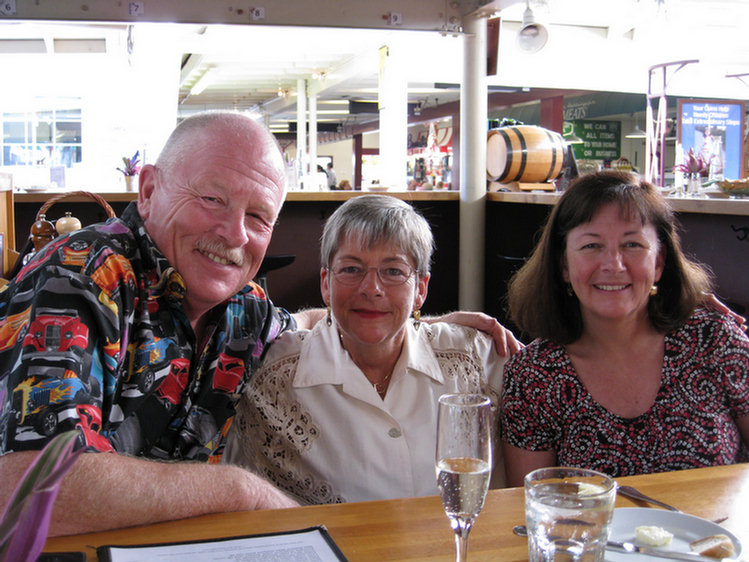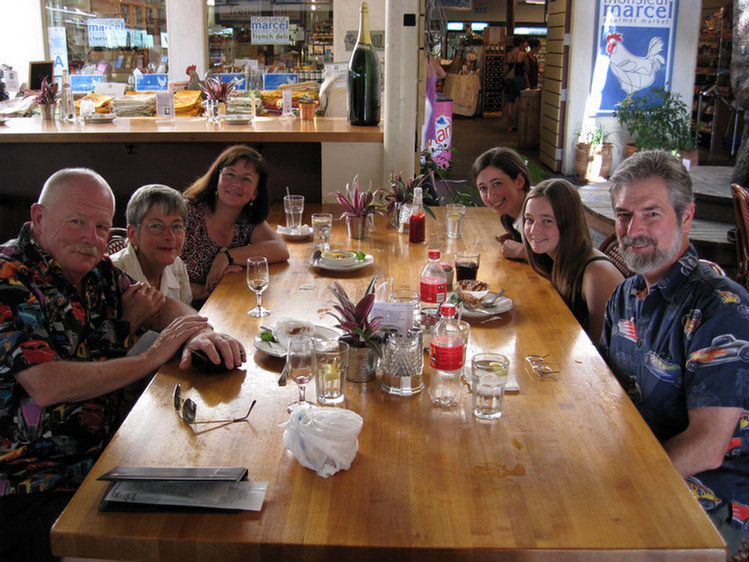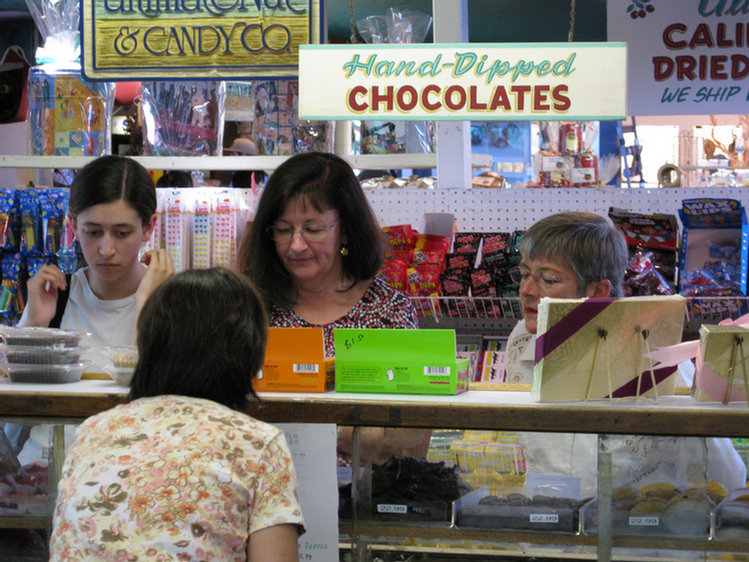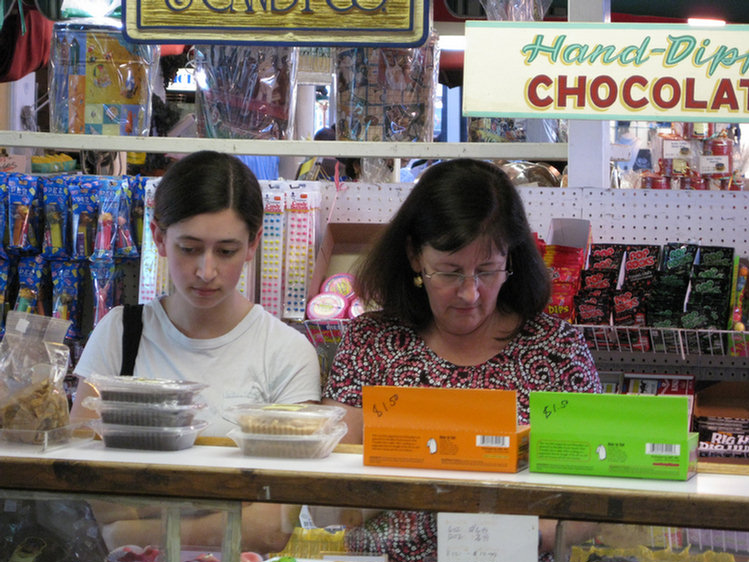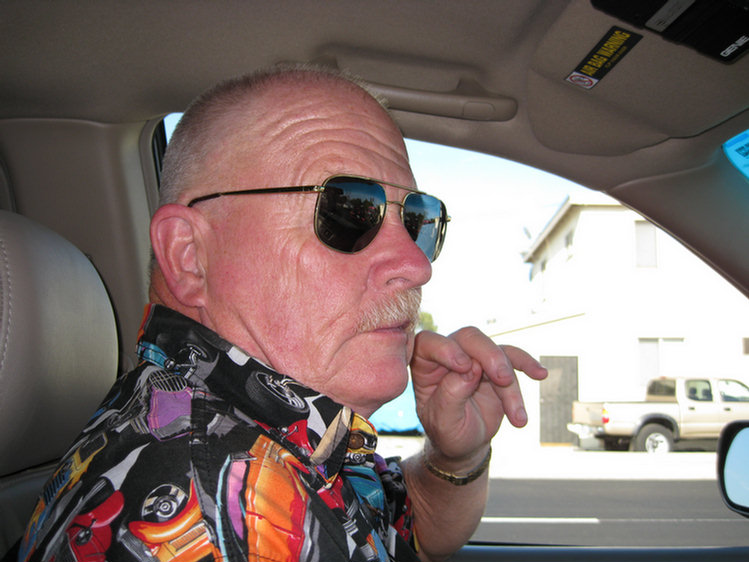Museums
Great places to allow your mind to expand
Petersen's Automotive Museum 2008 (7/22/2008)
Pat, Diane, Hannah, and Lisa came for the week and we sent to UCLA to visit the potential campus of miss Hannah. On the way back home, we sent to Farmer's Market and of course stopped at Petersen's for Paul & Pat. The ladies went to the LA Country Museum of Art.
On June 11, 1994, Margie and Robert E. Petersen fulfilled a longtime dream when they became founding benefactors to start the Petersen Automotive Museum, donating $5 million to the Los Angeles County National History Museum. In April 2000, the Petersens contributed an additional $24.8 million dollars to the Los Angeles County Natural History Museum to retire the bond debt and establish the Petersen Automotive Museum Foundation as an independent nonprofit organization. Overall, their gifts to the Petersen Automotive Museum total over $30 million. Today, the Petersen Automotive Museum stands as the nation’s premiere automotive museum, serving thousands of visitors each year.
This Is What We Saw
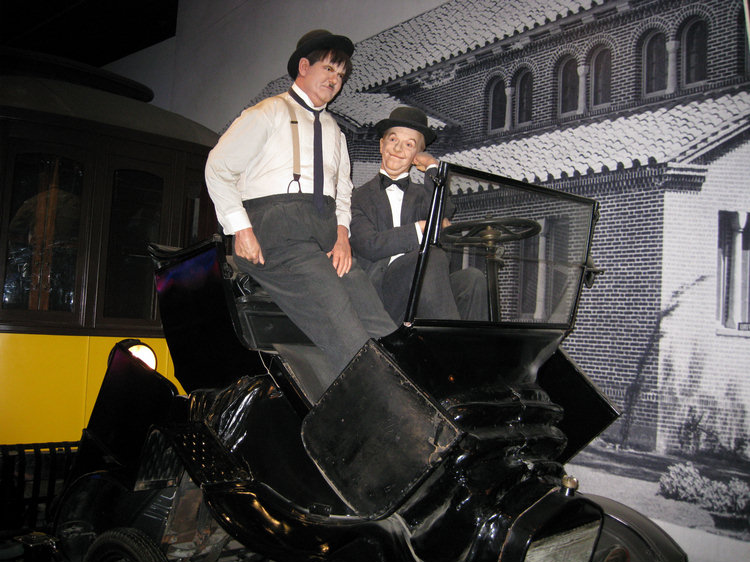 The famous Laurel and
Hardy vehicle was in the museum. Laurel and Hardy were the popular American-based comedy team of thin, British-born Stan
Laurel (1890-1965) and heavy, American-born Oliver Hardy (1892-1957). They became famous during the early half of the
20th century for their work in motion pictures, and also appeared on stage throughout America and Europe. The duo is considered
one of the most iconic and finest double acts in motion picture history.
The famous Laurel and
Hardy vehicle was in the museum. Laurel and Hardy were the popular American-based comedy team of thin, British-born Stan
Laurel (1890-1965) and heavy, American-born Oliver Hardy (1892-1957). They became famous during the early half of the
20th century for their work in motion pictures, and also appeared on stage throughout America and Europe. The duo is considered
one of the most iconic and finest double acts in motion picture history.

 Cadillac is
a brand of luxury vehicles owned by General Motors. Cadillac vehicles are officially sold in over 50 countries and territories,
with the majority sold in the United States and Canada. In the mid-20th century, the name became a synonym within the
United States for "high quality", used in such phrases as "the Cadillac of watches," referring to a Rolex. Cadillac's
current slogan is Life. Liberty. And The Pursuit., in reference to the inalienable rights mentioned in the United States
Declaration of Independence.
Cadillac is
a brand of luxury vehicles owned by General Motors. Cadillac vehicles are officially sold in over 50 countries and territories,
with the majority sold in the United States and Canada. In the mid-20th century, the name became a synonym within the
United States for "high quality", used in such phrases as "the Cadillac of watches," referring to a Rolex. Cadillac's
current slogan is Life. Liberty. And The Pursuit., in reference to the inalienable rights mentioned in the United States
Declaration of Independence.
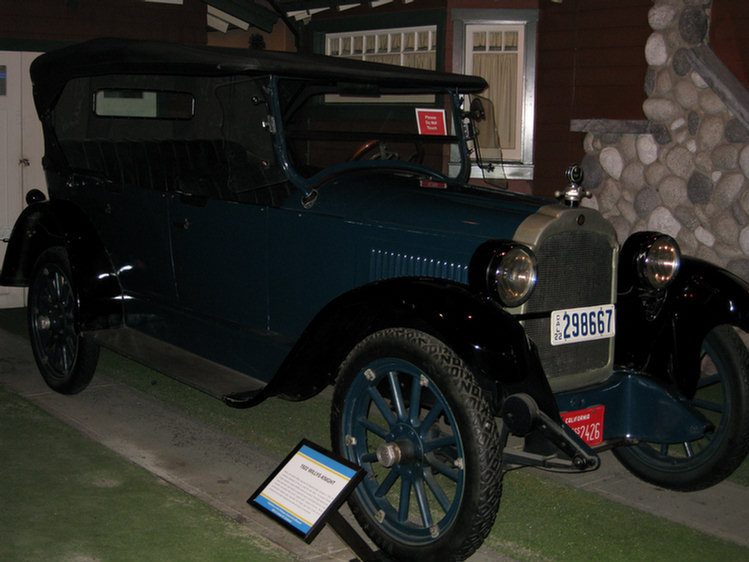 1922 Willys-Knight
. Willys-Knight was an automobile produced between 1914 and 1933 by the Willys-Overland Company of Toledo, Ohio.
1922 Willys-Knight
. Willys-Knight was an automobile produced between 1914 and 1933 by the Willys-Overland Company of Toledo, Ohio.
John North Willys purchased the Edwards Motor Car Company of Long Island, New York in 1913, moving the operation to Elyria,
Ohio where Willys owned the plant that had previously manufactured the Garford automobile. Production began with a four-cylider
model which was priced in the $2,500 price range. The Willys-Knight employed a Knight sleeve valve engine, generally four-
and six-cylinder models.
In 1915 Willys moved assembly of the Willys-Knight to Toledo, Ohio, but continued manufacturing the engines in Elyria.
Willys-Knight introduced a sleeve-valve V-8 in 1917, which was sold until 1919. Willys-Knight enjoyed a production run
average of 50,000 cars per year after 1922. Willys also purchased Stearns-Knight of Cleveland, Ohio which also used a
sleeve valve Knight Engine, making that marque the crown jewel in his growing automotive empire. Willys-Knight production
ended in November 1932 when the company, in receivership.
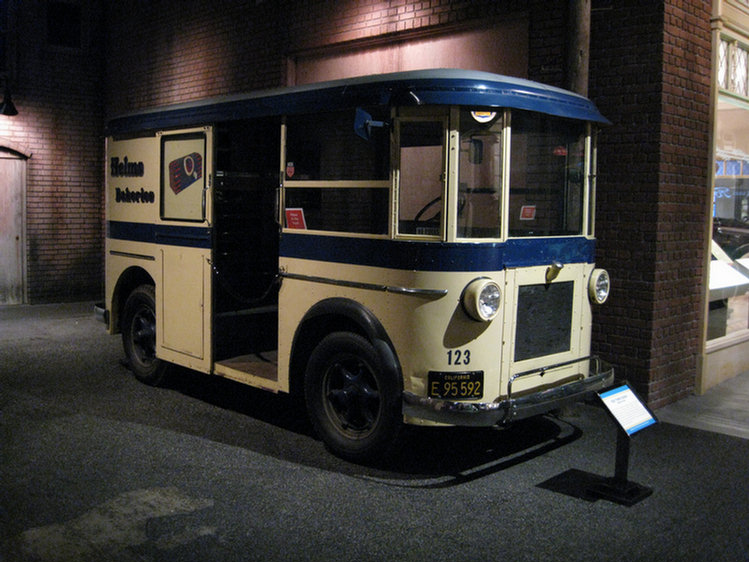 One could almost
smell the fresh donts and breads that used to be delivered to your house! The Helms Bakery in Culver City, California
was a notable industrial bakery of Southern California that operated from 1931 to 1969.
One could almost
smell the fresh donts and breads that used to be delivered to your house! The Helms Bakery in Culver City, California
was a notable industrial bakery of Southern California that operated from 1931 to 1969.
In 1926, Paul Helms of New York took an early retirement for health reasons and moved his family to Southern California
and its mild climate. Helms started construction on a building between Washington and Venice Boulevards in 1930 and, on
March 2, 1931, the Helms Bakery opened with 32 employees and 11 delivery coaches (trucks).
By the next year, the Helms Bakery had become the "official baker" of the 1932 Summer Olympics when Paul Helms won contract
to supply bread for the 1932 games in Los Angeles. Early Helms coaches sported the Olympic symbol, and it also appeared
on, and was mentioned in, the Helms logo on the bread wrappers.
Despite never being sold in stores, Helms baked products soon became known to millions of consumers. The Helms motto was
"Daily at Your Door" and every weekday morning, from both the Culver City facility and a second Helms Bakery site in Montebello,
dozens of Helms panel trucks, painted in a unique two-tone scheme, would leave the bakery for various parts of the Los
Angeles Basin, some going as far as the eastern San Gabriel Valley. This is remarkable because the network of freeways
had not yet been built, so the trip might take an hour or more. Each truck would travel through its assigned neighborhoods,
with the driver periodically pulling (twice) on a large handle which sounded a distinctive whistle. Customers would come
out and wave the truck down, or sometimes chase the trucks to adjacent streets. Wooden drawers in the back of the truck
were stocked with fresh donuts, cookies and pastries, while the center section of the truck carried dozens of loaves of
freshly-baked bread. Products often reached the buyers still warm from the oven.

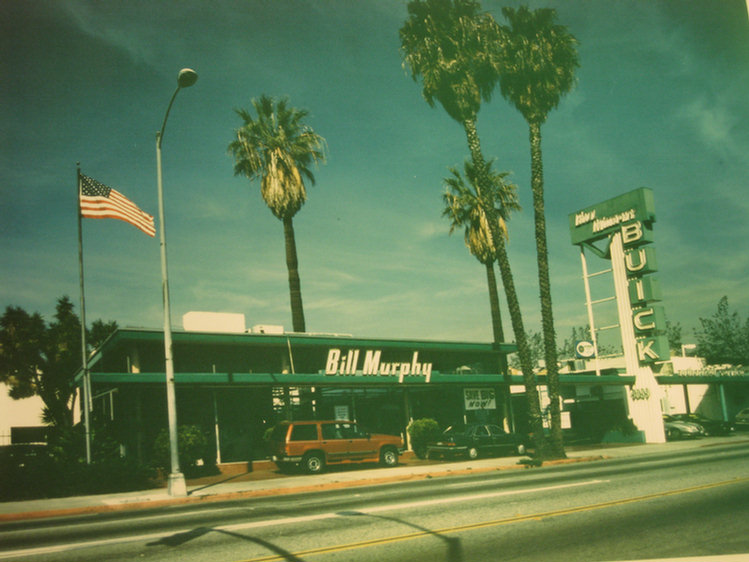 Bill Murphy
Buick was about a miles from our old home and we bought a 1955 Buick Special from Bill Murphy on the night they first
came out. The sky was covered with search lights announcing the arrival of the 55's. Bill Murphy, a longtime
Los Angeles-area automobile dealer who was also a top California sports car racer in the 1950s, died from complications
of congestive heart failure July 14 2005. Murphy was the owner and operator of Bill Murphy Buick on Washington Boulevard
in Culver City and in his 40s when he began generating headlines for his car racing.
Bill Murphy
Buick was about a miles from our old home and we bought a 1955 Buick Special from Bill Murphy on the night they first
came out. The sky was covered with search lights announcing the arrival of the 55's. Bill Murphy, a longtime
Los Angeles-area automobile dealer who was also a top California sports car racer in the 1950s, died from complications
of congestive heart failure July 14 2005. Murphy was the owner and operator of Bill Murphy Buick on Washington Boulevard
in Culver City and in his 40s when he began generating headlines for his car racing.
By the early '60s, Murphy had quit racing and turned his attention to other interests, such as flying, running his cattle
ranch in San Luis Obispo County and raising thoroughbred racehorses. In addition to running his own car dealership, he
also provided financing to get a number of new car dealers started. And in the '70s he owned a Learjet dealership in Van
Nuys, said to be the only one on the West Coast and one of only three in the nation at the time.
He began by selling cars wholesale, then opened a DeSoto-Plymouth dealership on Vermont Avenue in downtown Los Angeles
in 1938. Ten years later, he opened a Plymouth-Desoto dealership in Culver City, which became a Buick dealership in 1952.
That business, which he owned and operated until 1997, earned a reputation as the world's largest Buick dealership from
1962 to 1967.
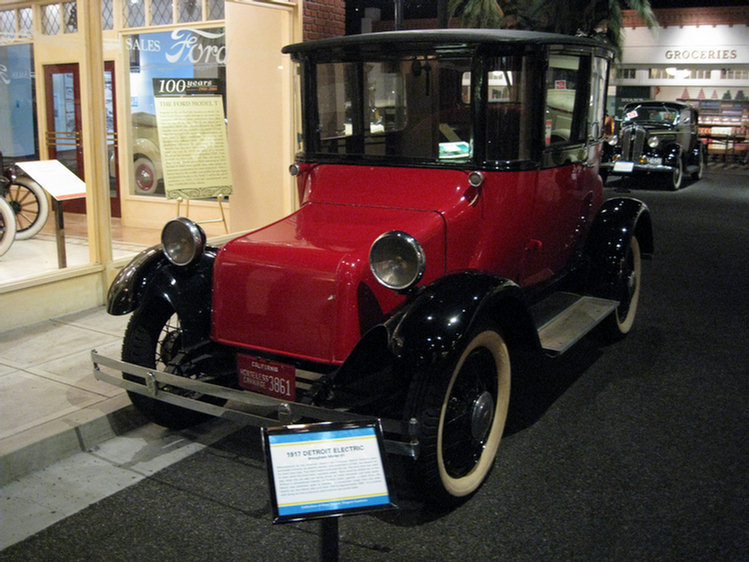 1927 Detroit
Electric - Detroit Electric (1907 - 1939) was an automobile brand produced by the Anderson Electric Car Company
in Detroit, Michigan. Anderson had previously been known as the Anderson Carriage Company (until 1911), producing carriages
and buggies since 1884. Production of the electric automobile, powered by a rechargeable lead acid battery, began in 1907.
For an additional $600.00 an Edison nickel-iron battery was available from 1911 to 1916. The cars were advertised as reliably
getting 80 miles (130 km) between battery recharging, although in one test a Detroit Electric ran 211.3 miles (340.1 km)
on a single charge. Top speed was only about 20 miles per hour (32 km/h), but this was considered adequate for driving
within city or town limits at the time.
1927 Detroit
Electric - Detroit Electric (1907 - 1939) was an automobile brand produced by the Anderson Electric Car Company
in Detroit, Michigan. Anderson had previously been known as the Anderson Carriage Company (until 1911), producing carriages
and buggies since 1884. Production of the electric automobile, powered by a rechargeable lead acid battery, began in 1907.
For an additional $600.00 an Edison nickel-iron battery was available from 1911 to 1916. The cars were advertised as reliably
getting 80 miles (130 km) between battery recharging, although in one test a Detroit Electric ran 211.3 miles (340.1 km)
on a single charge. Top speed was only about 20 miles per hour (32 km/h), but this was considered adequate for driving
within city or town limits at the time.
The Detroit Electric was mainly sold to women drivers and physicians who desired the dependable and immediate start without
the physically demanding hand cranking of the engine that was required with early internal combustion engine autos. A
statement of the car's refinement was subtly made to the public through its design which included the first use of curved
window glass in a production automobile, an expensive and complex feature to produce.
The company production was at its peak in the 1910s selling around 1000 to 2000 cars a year. Towards the end of the decade
the Electric was helped by the high price of gasoline during World War I. In 1920 the name of the Anderson company was
changed to "The Detroit Electric Car Company" as the car maker separated from the body business (it became part of Murray
Body) and the motor/controller business (Elwell-Parker).
As improved internal combustion engine automobiles became more common and inexpensive, sales of the Electric dropped in
the 1920s but the company stayed in business producing Detroit Electrics until after the stock market crash of 1929. The
company filed for bankruptcy, but was acquired and kept in business on a more limited scale for some years building cars
in response to special orders. The last Detroit Electric was shipped on February 23, 1939
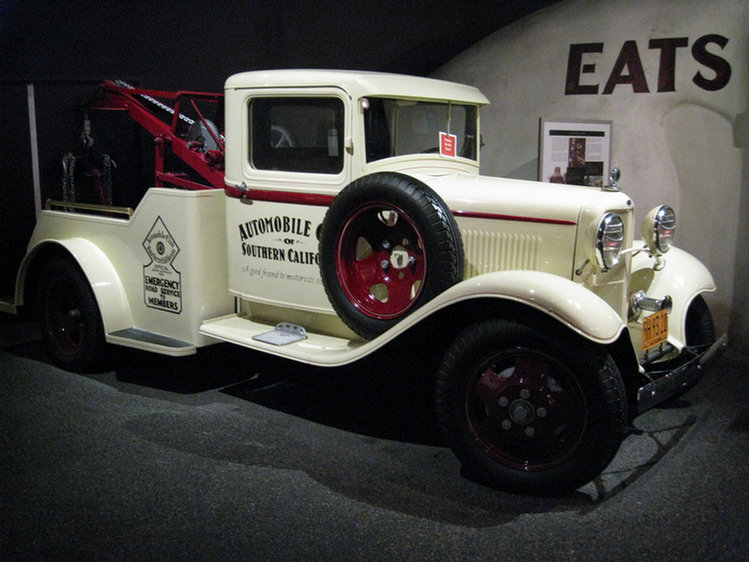
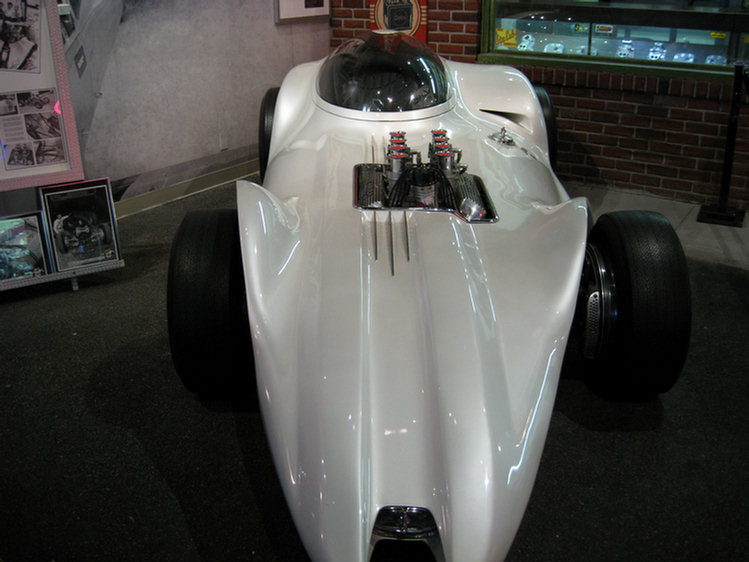
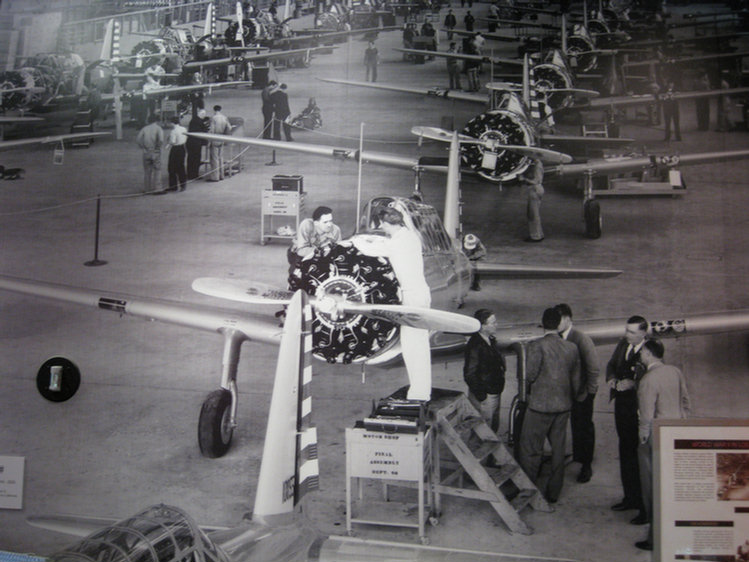 The Downey
California assembly plant for the Vultee BT-13s.
The Downey
California assembly plant for the Vultee BT-13s.
The Vultee BT-13 was the basic trainer flown by most American pilots during WWII. It was the second phase of the three phase training program for pilots. After primary training, the student pilot moved to the more complex Vultee. The BT-13 had a more powerful engine and was faster and heavier than the primary trainer. It required the student pilot to use two way radio communications with the ground and to operate landing flaps and a two-position variable pitch propeller. It did not, however, have retractable landing gear or a hydraulic system. The large flaps are operated by a crank-and-cable system (there is no hydraulic system). Its pilots nicknamed it the "Vultee Vibrator."
The 7,037 BT-13's served its intended purpose well. It and its successors were unforgiving aircraft to fly, but were also extremely agile. Thus the BT-13 made a good aircraft to help transition many hundreds of pilots toward their advance trainers and fighters yet to be mastered.
 Thanks to
Dave Llorente for the corrected information.
Dave and Paul worked together on the Apollo and Shuttle programs at North American/Rockwell in the 1960's and 1970's.
Dave was a great pilot and enjoyed airplanes as much as anyone we ever knew. His stories of the F86 were captivating.
Thanks Dave for the update!
Thanks to
Dave Llorente for the corrected information.
Dave and Paul worked together on the Apollo and Shuttle programs at North American/Rockwell in the 1960's and 1970's.
Dave was a great pilot and enjoyed airplanes as much as anyone we ever knew. His stories of the F86 were captivating.
Thanks Dave for the update!
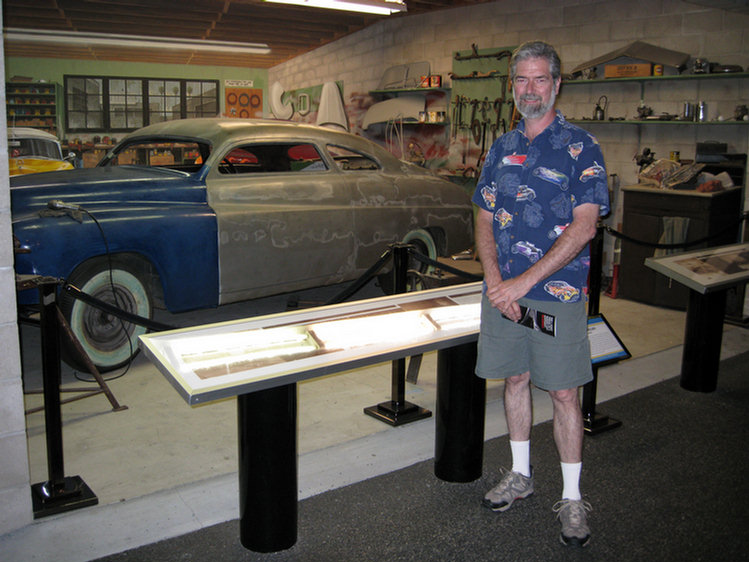 Pat was ready
to assist in cutting and chopping! To chop a roof the pillars and windows are cut down, lowering the overall roofline.
"Chopping the top" goes back to the early days of hot rodding in an attempt to reduce the frontal profile of a car and
increase its speed potential. Some racers on the dry lakes chopped the tops of their cars so severely that the windows
were only a few inches tall. These were sometimes referred to as "mail slot" windows. This sort of bodywork is also popular
on custom cars, kustoms, and leadsleds. Roof chopping also quickly became very popular with drag racers for much the same
reasons as it did for lakes racers. The first roof chopper is considered to be Sam Barris (see article about his brother)
who chopped and customised his brand new 1949 Mercury. Barris also pioneered a more advanced form, where the B-pillar
is removed turning it into a pillarless hardtop in the process.
Pat was ready
to assist in cutting and chopping! To chop a roof the pillars and windows are cut down, lowering the overall roofline.
"Chopping the top" goes back to the early days of hot rodding in an attempt to reduce the frontal profile of a car and
increase its speed potential. Some racers on the dry lakes chopped the tops of their cars so severely that the windows
were only a few inches tall. These were sometimes referred to as "mail slot" windows. This sort of bodywork is also popular
on custom cars, kustoms, and leadsleds. Roof chopping also quickly became very popular with drag racers for much the same
reasons as it did for lakes racers. The first roof chopper is considered to be Sam Barris (see article about his brother)
who chopped and customised his brand new 1949 Mercury. Barris also pioneered a more advanced form, where the B-pillar
is removed turning it into a pillarless hardtop in the process.
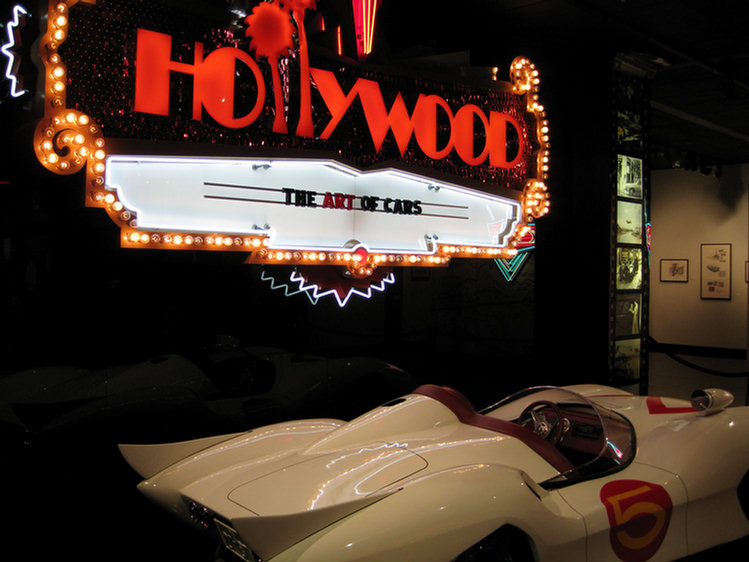
 On February
12, 1908, the first around-the-world automobile race began with six entrants, starting on 43rd Street in New York City.
Their destination was Paris. The first car crossed the finish line on July 18, but its team was penalised 15 days for
using railroad transport to meet a critical North American deadline (meeting the other surviving racers to catch a ship
to Russia). They lost to the American entry driven by George Schuster, which arrived on July 22.
On February
12, 1908, the first around-the-world automobile race began with six entrants, starting on 43rd Street in New York City.
Their destination was Paris. The first car crossed the finish line on July 18, but its team was penalised 15 days for
using railroad transport to meet a critical North American deadline (meeting the other surviving racers to catch a ship
to Russia). They lost to the American entry driven by George Schuster, which arrived on July 22.
Only the approximate race route and the time period were borrowed by Blake Edwards in his effort to make "the funniest
comedy ever" . Building on the dedication to "Mr Laurel and Mr Hardy", the film makes use of every silent movie era slapstick
and visual gag, along with double entendres, parodies and period-related absurdism (amongst these are the elaborate gowns
of Maggie DuBois and the fact that, with limited luggage, she never repeats an outfit). The unintended consequences of
Professor Fate's order, "Push the button, Max!", is a running gag, along with the untouchability of The Great Leslie.
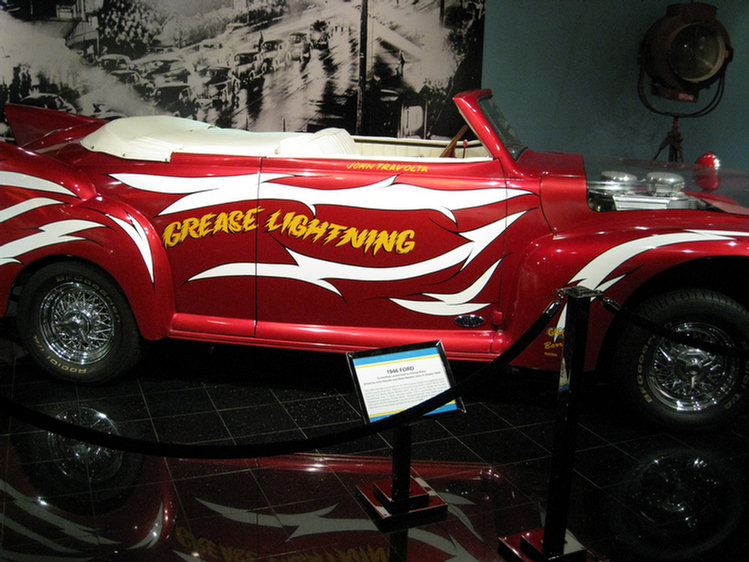 Used in the
last scene of the movie as Danny and Sandy drive of into the sky! On the last day of school carnival, Danny arrives, having
followed through on his track jock plans, in a preppy letter sweater. However, Sandy arrives wearing a black leather jacket,
red peep-toe high heeled sandals, skintight black off-the-shoulder top, curled hair, and smoking a cigarette — no more
goody-two-shoes. Danny finds her extremely attractive, falling at her feet, and then the two reunite, singing the upbeat
"You're the One That I Want" (another song added for the movie, and a hit single before the movie even came out). Kenickie
and Rizzo get together after Rizzo has screamed from the Ferris wheel that she is not pregnant after all, and everyone
sings the big finale, "We Go Together", and Danny and Sandy fly off in the "Grease (Reprise)" car and disappear into the
sky. Tis was that car!
Used in the
last scene of the movie as Danny and Sandy drive of into the sky! On the last day of school carnival, Danny arrives, having
followed through on his track jock plans, in a preppy letter sweater. However, Sandy arrives wearing a black leather jacket,
red peep-toe high heeled sandals, skintight black off-the-shoulder top, curled hair, and smoking a cigarette — no more
goody-two-shoes. Danny finds her extremely attractive, falling at her feet, and then the two reunite, singing the upbeat
"You're the One That I Want" (another song added for the movie, and a hit single before the movie even came out). Kenickie
and Rizzo get together after Rizzo has screamed from the Ferris wheel that she is not pregnant after all, and everyone
sings the big finale, "We Go Together", and Danny and Sandy fly off in the "Grease (Reprise)" car and disappear into the
sky. Tis was that car!
Let's Go Camping And Tailoring In The 1940's!

A travel trailer or caravan is a trailer towed behind a road vehicle to provide a place to sleep which is more comfortable and protected than a tent (although there are fold-down tent trailers). It provides the means for people to have their own home on a journey or a vacation (holiday), without relying on a motel or hotel, and enables them to stay in places where none is available. Travel trailers and caravans vary from basic models which may be little more than a tent on wheels to those containing several rooms with all the furniture and furnishings and equipment of a home. They are used principally in North America and Europe and are rare elsewhere.
In the United States and Canada, the history of travel trailers can be traced back to the early 1920s, when those who enjoyed their use were often referred to as Tin Can Tourists. As time progressed, trailers became more livable and earned a new name in the 1930s and 1940s which was the House Trailer.

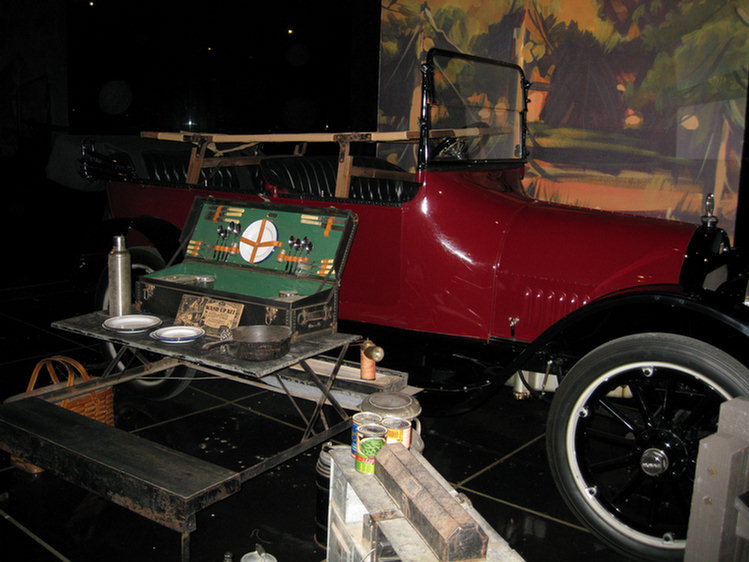




 The increasing number of vacationers traveling
by car eventually created a burgeoning market for specialized recreational equipment. Large and spacious canvas tents
were preferred by those seeking to maximize their temporary living space while a number of manufacturers made specially
adapted mattresses that unfolded to transform a touring car into an acceptable form of overnight lodging for one or two
adults.
The increasing number of vacationers traveling
by car eventually created a burgeoning market for specialized recreational equipment. Large and spacious canvas tents
were preferred by those seeking to maximize their temporary living space while a number of manufacturers made specially
adapted mattresses that unfolded to transform a touring car into an acceptable form of overnight lodging for one or two
adults.
American ingenuity must have went wild after seeing some of the displays at the Petersen Car Museum!
Buyers seeking more comfortable housing that did not need to be assembled and disassembled at every stop were obliged to buy regular production cars or trucks and have them custom built and equipped at considerable expense or modify them themselves to save money.
Called house cars, the dual-purpose vehicles they created resembled small bungalows on wheels. At first built primarily of wood, they were prohibitively expensive because of the large amount of specialized work required to design and assemble them.
The craftsmanship was amazing with wood paneling just amazing and clever ideas which are still in use today!
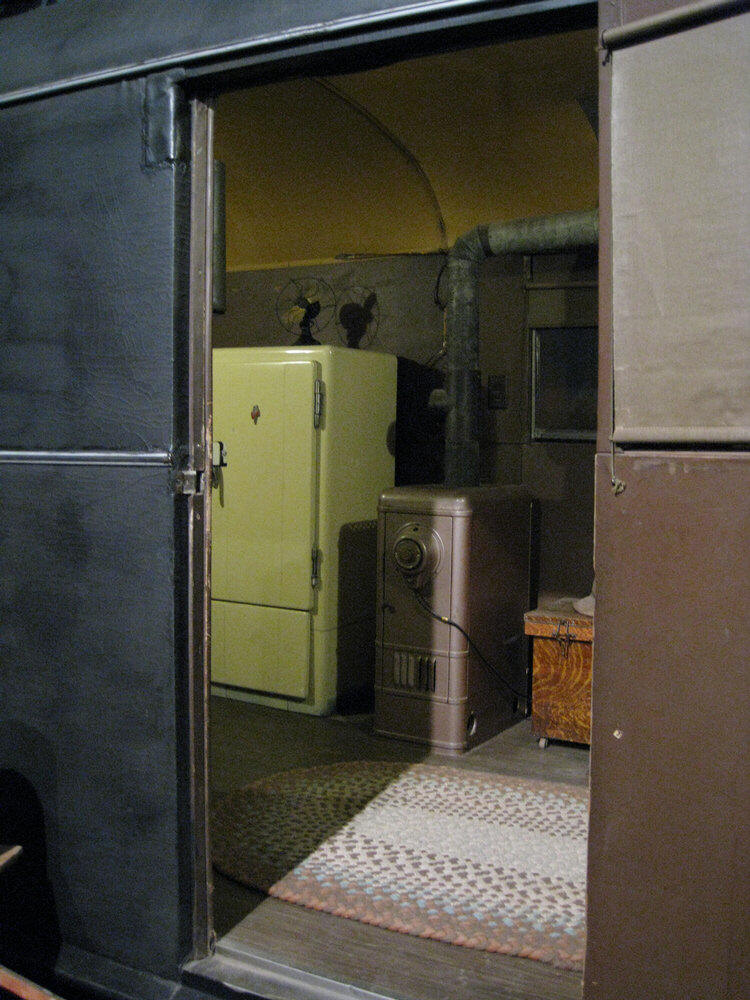
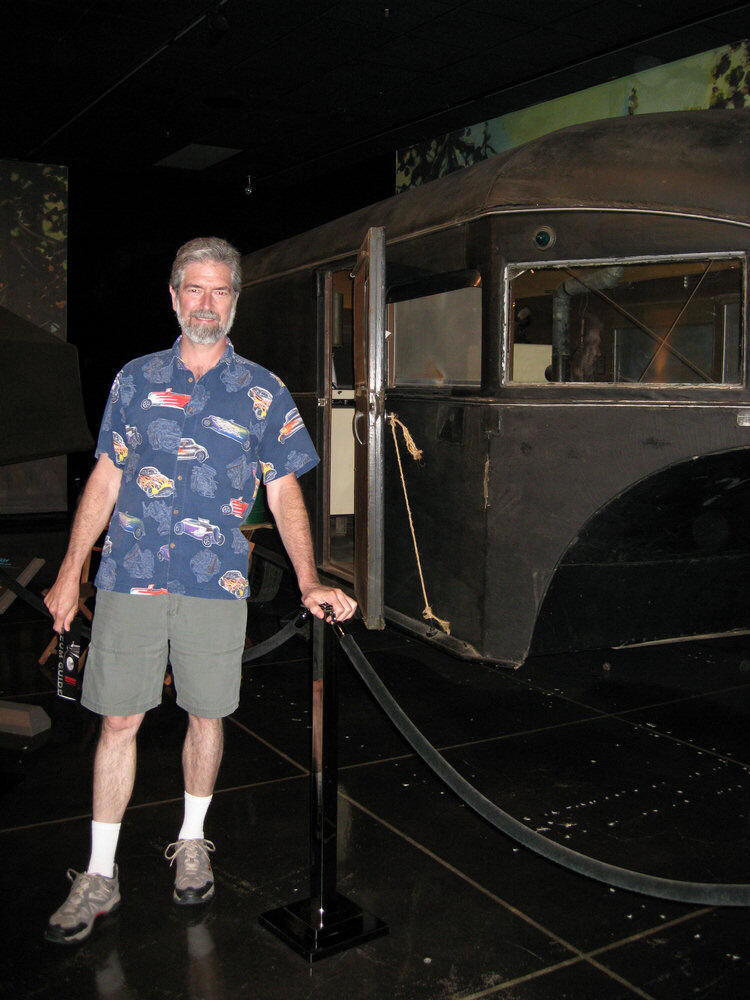
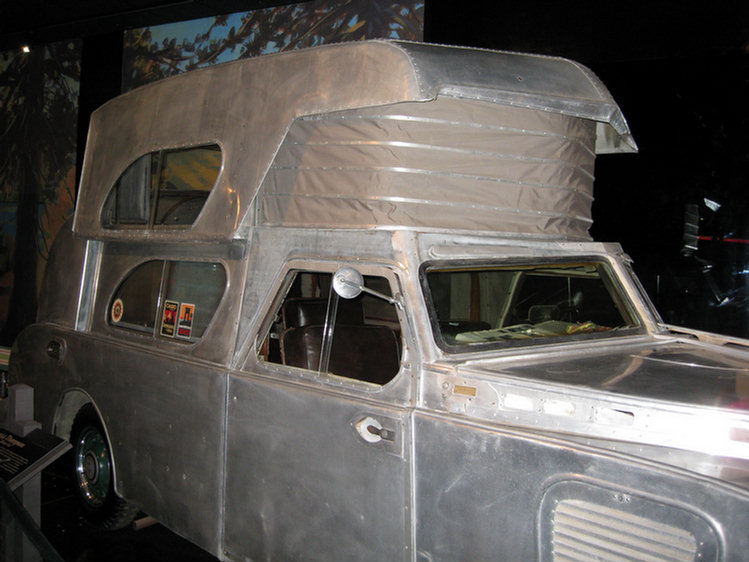
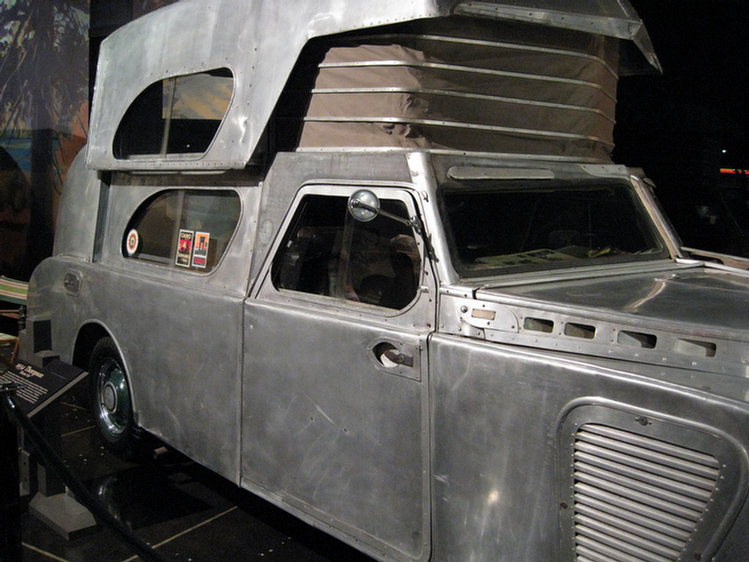
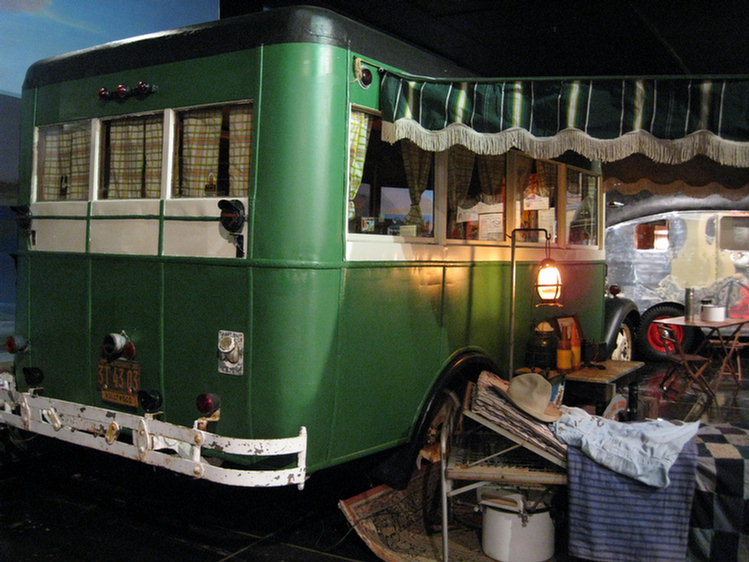
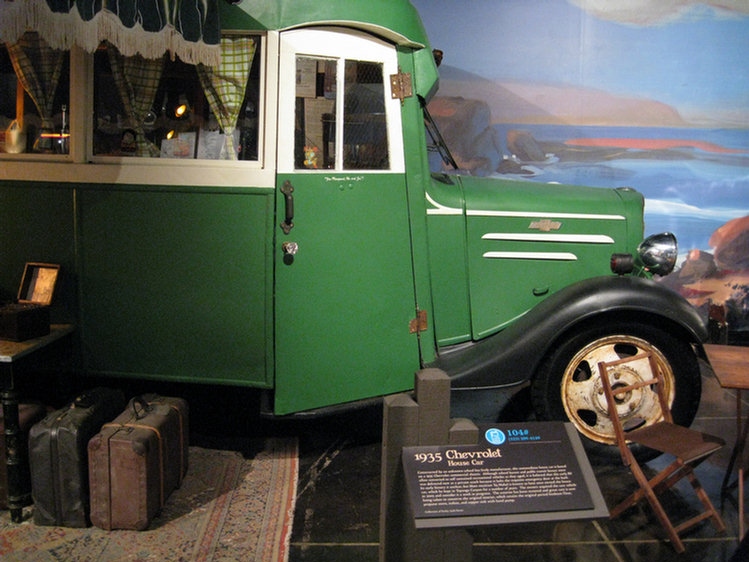
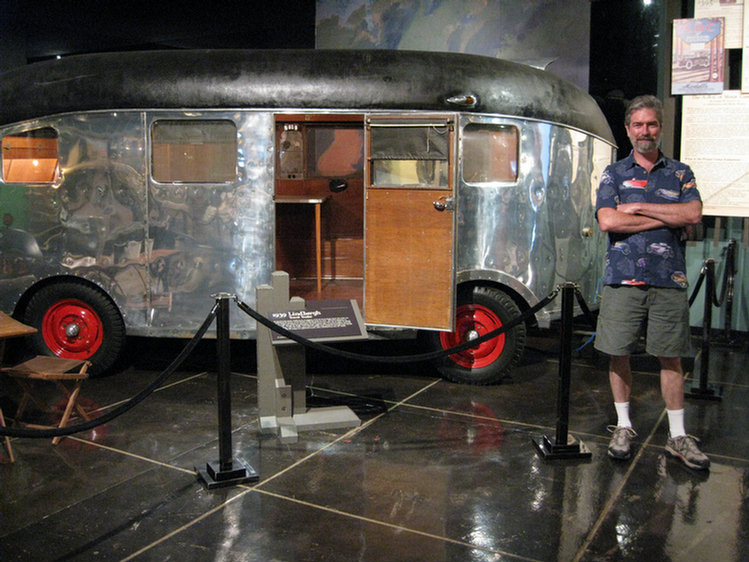 1939 customer
tailer built for Charles Lindberg.
1939 customer
tailer built for Charles Lindberg.
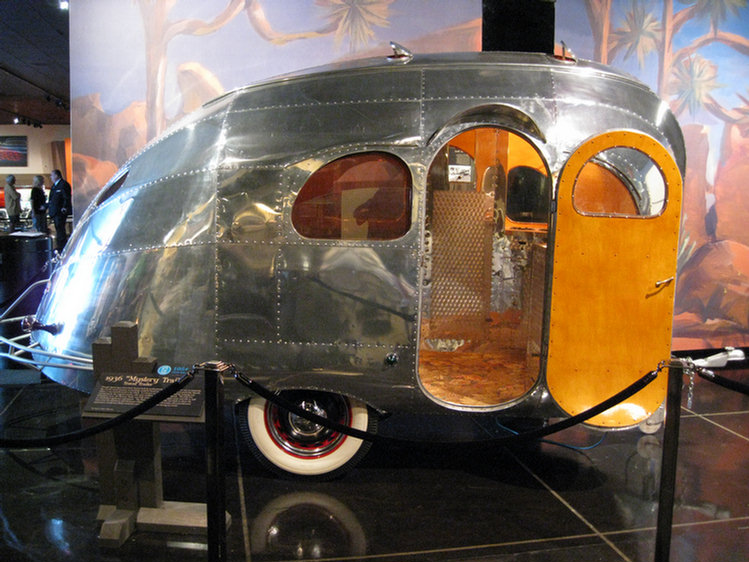
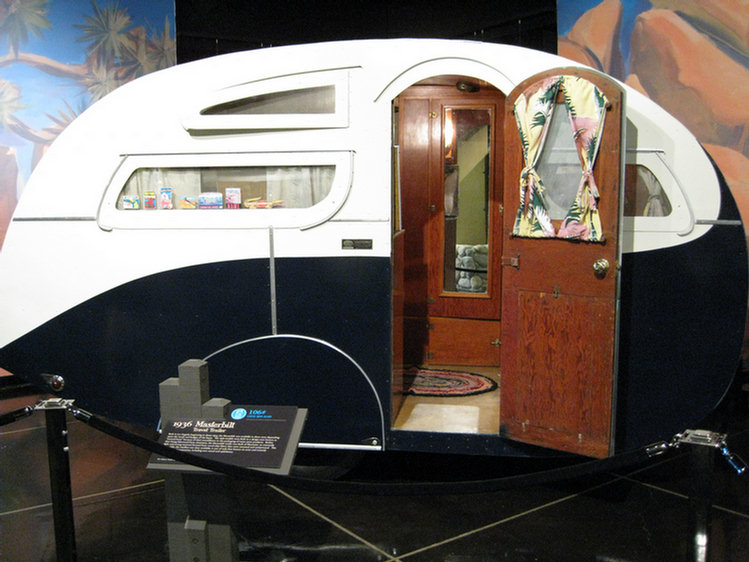 1936 Masterbuilt
travel trailer.
1936 Masterbuilt
travel trailer.
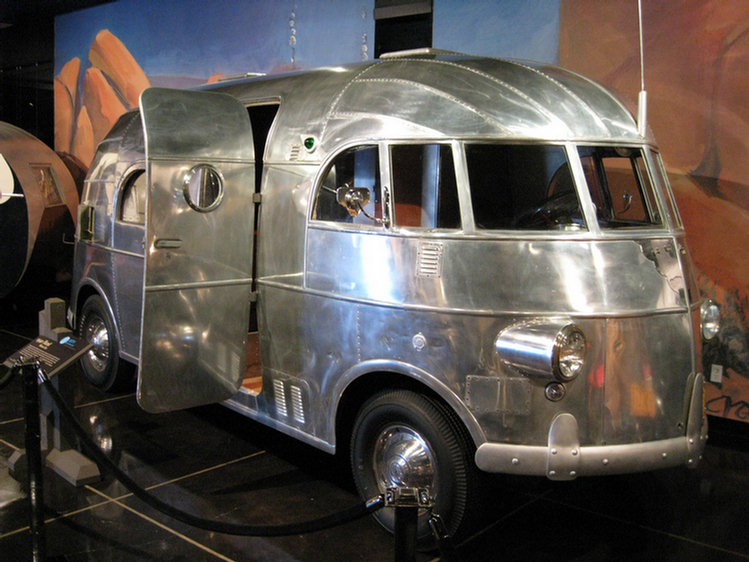
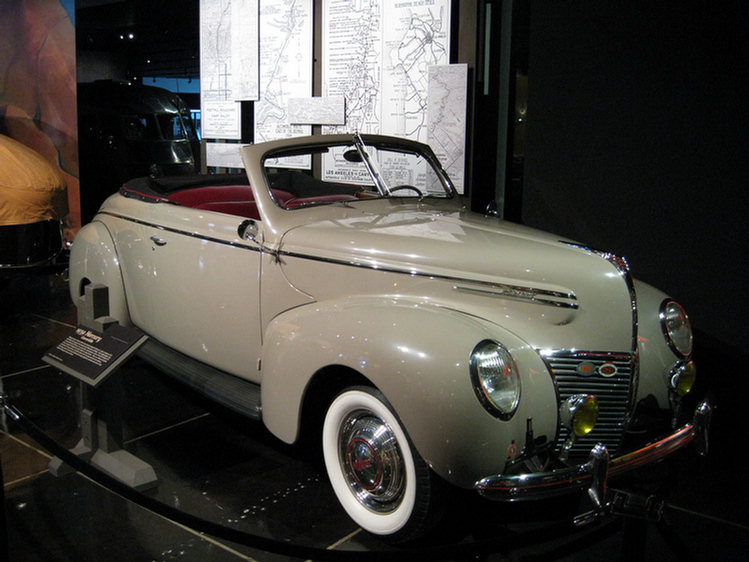
Movies From The Era Gone By!
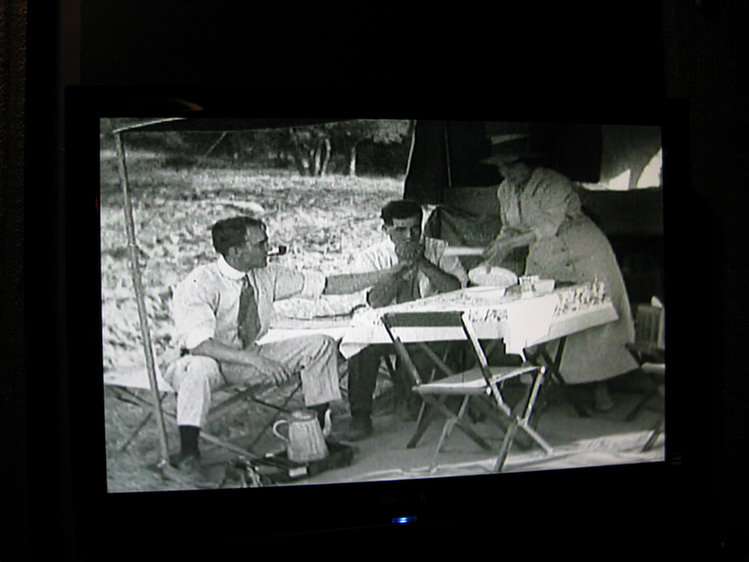




Now A Little More Modern Displays
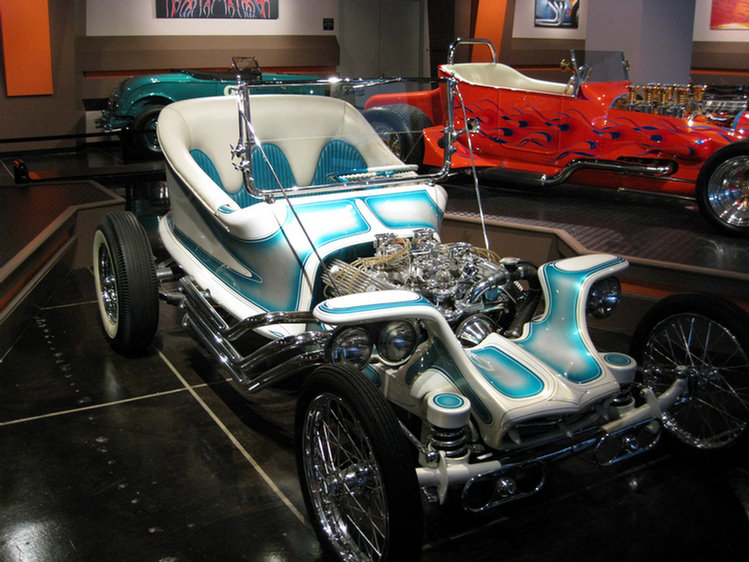
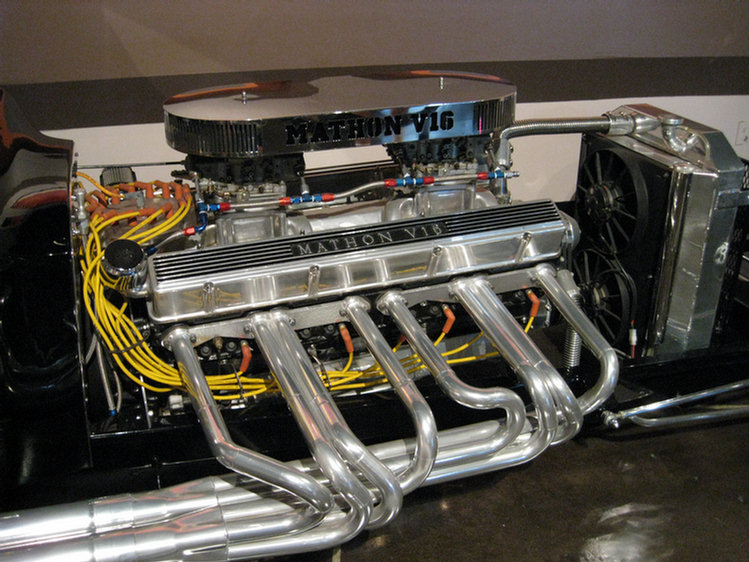 Check it out...
A V-16 made from two Chevy blocks welded together!!! 700ci monster makes 550 hp and 550 lb-ft of torque.
Check it out...
A V-16 made from two Chevy blocks welded together!!! 700ci monster makes 550 hp and 550 lb-ft of torque.



The Treasure Vault

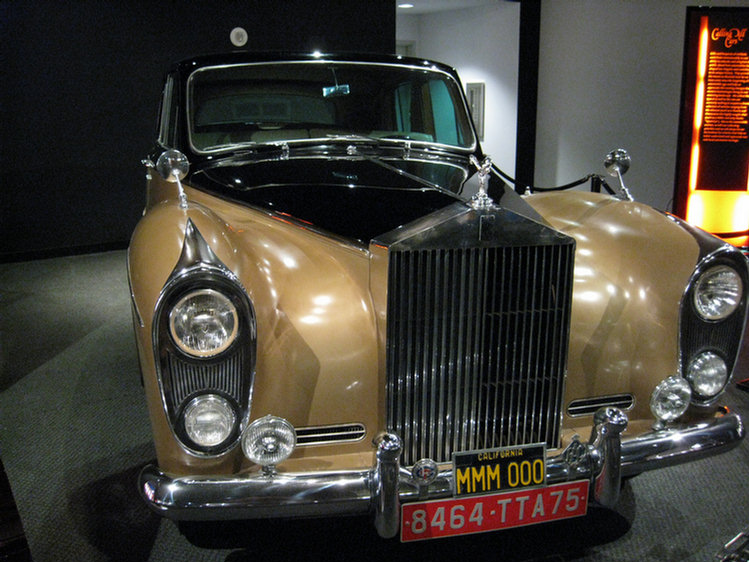
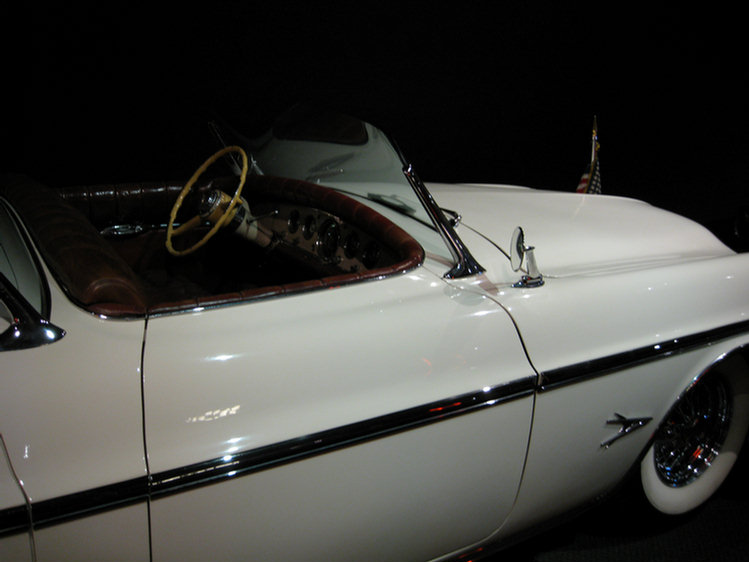
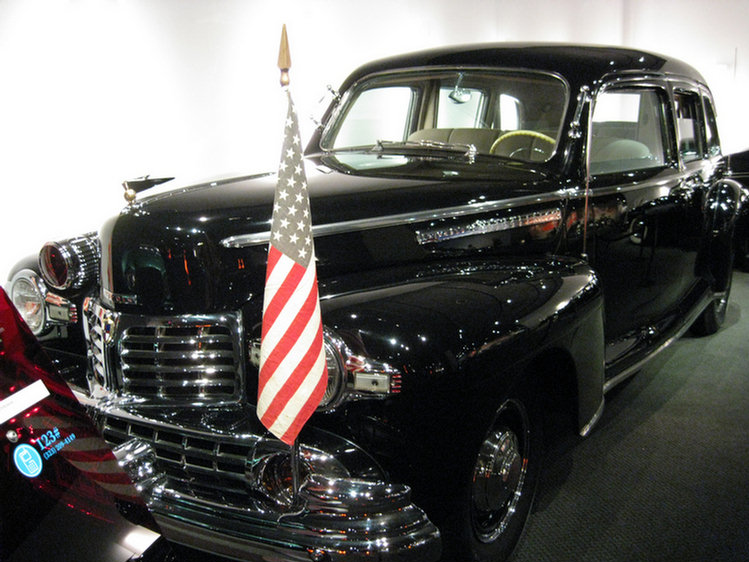 FDR's and Truman's
Limo! On December 8, 1941, the day after the Japanese attack on Pearl Harbor, the Secret Service used an armored
limousine, originally belonging to Prohibition-era gangster Al Capone, to transport the President to Congress to present
his famous Infamy Speech. The car had been confiscated by the Department of the Treasury following Capone's conviction
for tax evasion and had been stored in a Washington, D.C. impound lot until its ironic final duty.
FDR's and Truman's
Limo! On December 8, 1941, the day after the Japanese attack on Pearl Harbor, the Secret Service used an armored
limousine, originally belonging to Prohibition-era gangster Al Capone, to transport the President to Congress to present
his famous Infamy Speech. The car had been confiscated by the Department of the Treasury following Capone's conviction
for tax evasion and had been stored in a Washington, D.C. impound lot until its ironic final duty.
The first car specially built for presidential use was the 1939 Lincoln V12 convertible called the "Sunshine Special"
used by Franklin D. Roosevelt. It remained in use until 1950. The vehicle was donated to the Henry Ford Museum in Dearborn,
Michigan, where it was on permanent display. It is now at the Petersen Museum.

 Check the wifth
of the glass.... Almost one solid inch!
Check the wifth
of the glass.... Almost one solid inch!
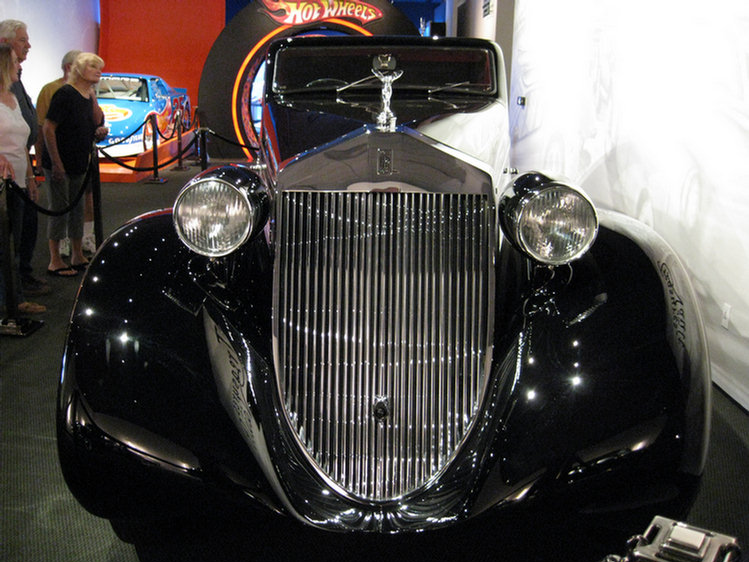
Time To Eat

